Students Improv with Jack DeJohnette

Famed jazz improviser Jack DeJohnette "spontaneously composes" with students.
Photo by Phil Farnsworth
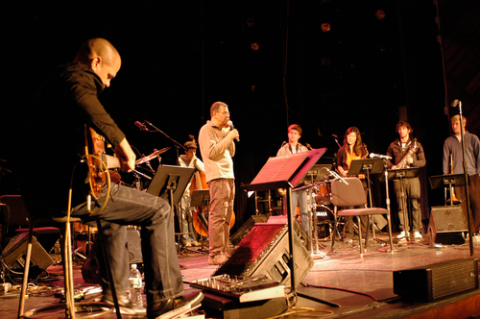
The clinic audience got a preview of the concert that evening, and the performers got another chance to practice together.
Photo by Phil Farnsworth

Berklee guitar professor and DeJohnette bandmate David Fiuczynski plays double neck guitar.
Photo by Phil Farnsworth
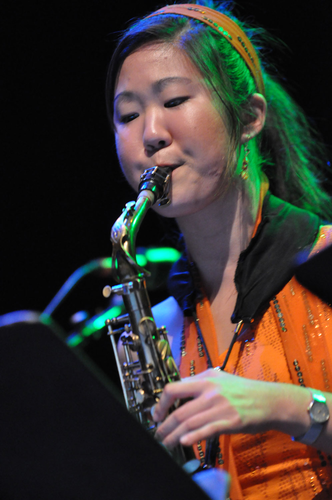
Alto saxophonist Grace Kelly
Photo by Phil Farnsworth
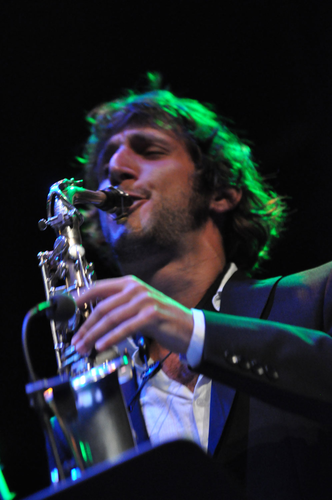
Alto saxophonist Eyal Hai
Photo by Phil Farnsworth
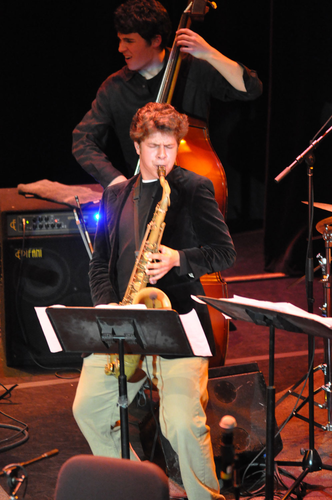
Tenor saxophonist Jesse Scheinin
Photo by Phil Farnsworth

Upright bassist Spencer Stewart
Photo by Phil Farnsworth
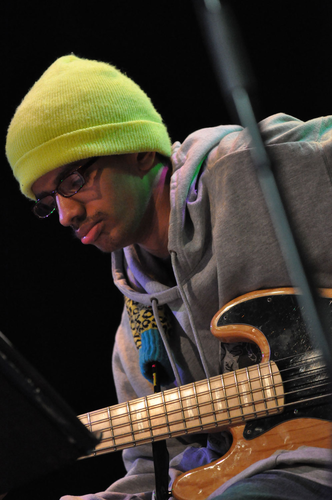
Bassist Dwayne Thomas Jr.
Photo by Phil Farnsworth
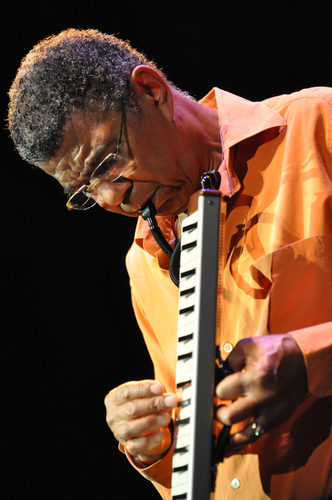
DeJohnette doubles on melodica.
Photo by Phil Farnsworth
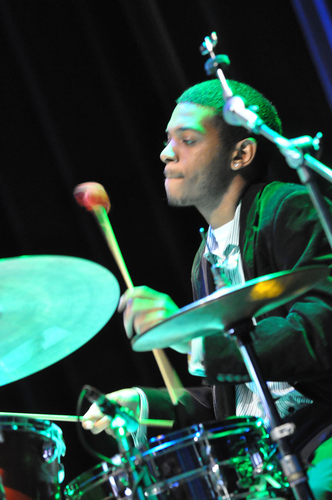
Mark Whitfield Jr. takes over the drums.
Photo by Phil Farnsworth
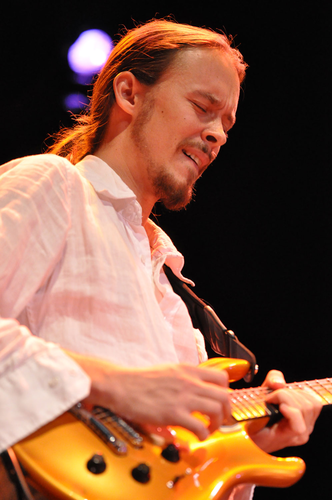
Guitarist Jussi Reijonen
Photo by Phil Farnsworth

Kanun player Ali Amr and vocalists Sofia Rubin, Gabriela Martina, Annete Philip, Sissy Castrogiovanni, Amelia Ali, and Julia Sokolowska
Photo by Phil Farnsworth
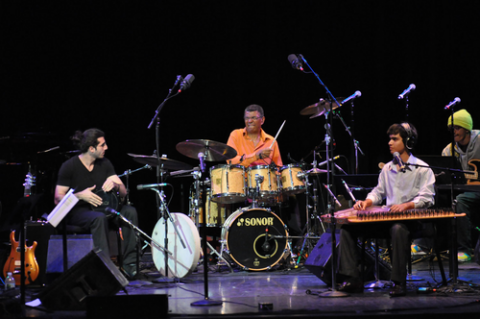
DeJohnette improvises with students Tareq Rantisi and Ali Amr.
Photo by Phil Farnsworth

Hand percussionist Tareq Rantisi
Photo by Phil Farnsworth
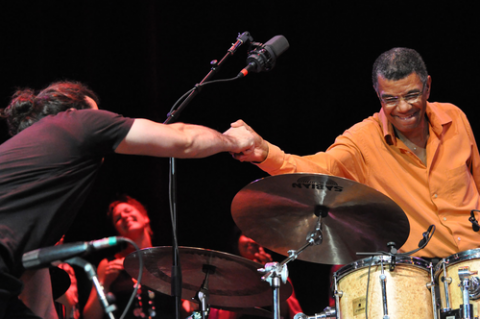
DeJohnette and Rantisi congratulate each other after a successful improv session.
Photo by Phil Farnsworth
For some lucky students, Jack DeJohnette's 2009–2010 Music Series at Berklee concert wasn't just an opportunity to see the jazz legend in action, but to actually perform with him. DeJohnette's entire backup band for the concert was made up of Berklee students, along with guitar professor and DeJohnette bandmate David Fiuczynski. The students practiced with the percussionist in the week leading up to the concert, performing for their fellow students at clinics where DeJohnette also answered questions about his music. Read on for an edited version of his comments.
On free improvisation
I like to call us "spontaneous composers." We play in real time and compose ideas and rhythms and harmonies and sounds. I think that comes from the discipline of creating, learning how to play with structures and rules—or learning the rules and then gradually breaking those rules. Playing with people who are kind of doing the same thing. You need the ability to find the right notes, which is kind of hard to do without a roadmap. If you have the discipline of playing in structures, it's almost impossible not to play free without creating structures. That's kind of what I look for. It's a constant, lifelong process.
On his intellectual process
I don't think of myself as an intellectual player, but in the process of a concept, that sort of comes into it. I like to think of it as a spiritual or more organic way of playing, like a spiral concept. Paul Desmond described it as, "Okay, play the washing machine." I explore building layers and layers on top of each other, almost in a similar way as Coltrane stacks chords on top of each other. I'm kind of hearing that kind of concept when I play jazz.
Depending on the type of music I play, the cymbals are like the sustain on a piano, like a bridge that connects. Sometimes I'm hearing bass drums like a bass, almost like playing changes. A lot of times I like to play with my snare drum off to get a more tribal sound. If I'm not, I try to play two drums like a hand percussionist. I try to incorporate those things even in straight-up jazz. My tuning is somewhere in the middle, where they won't clash sonically with the rest of the instruments.
On how he learned to drum
Drums came to me naturally; I'm self-taught. I started out as a pianist. I was well known in Chicago as a pianist. I got into drums in high school by listening to Ahmad Jamal. The brushwork was so amazing. I got brushes and started practicing on album covers, because they made such a nice, high-pitched sound. I had a lot of access to jazz records, so I was able to listen to a lot of the top drawers. I got the 26 rudiments, and would sit down and practice while watching television. I just watched drummers a lot. I would practice with records for hours. I practiced on hard and soft surfaces, because I was going out and playing jam sessions, playing someone else's drums. I didn't want to get stuck not being able to play a drum set no matter the tension on the heads.
On health issues for drummers
I switched to matched grip because I had a problem with tendinitis. I had to change my grip. I drink more water now; I sweat a lot when I play. It's important to keep your body hydrated when playing this instrument.
On playing the standards
We use the standards as satellites for vehicles to come off of and find new ways to approach them. When we come together we don't have any preconceived notions about how we're going to play a standard. We just start playing. So you just have to really stay open. With free improvisation we don't know what we're going to get, so we'll just do a sound check and we'll start playing. A big part of ensemble playing is the ability to listen to one another, just play, hopefully have a conversation, build a structure out of it. As Miles said, [hoarse whisper] "We'll play it now and tell you what it is later."
